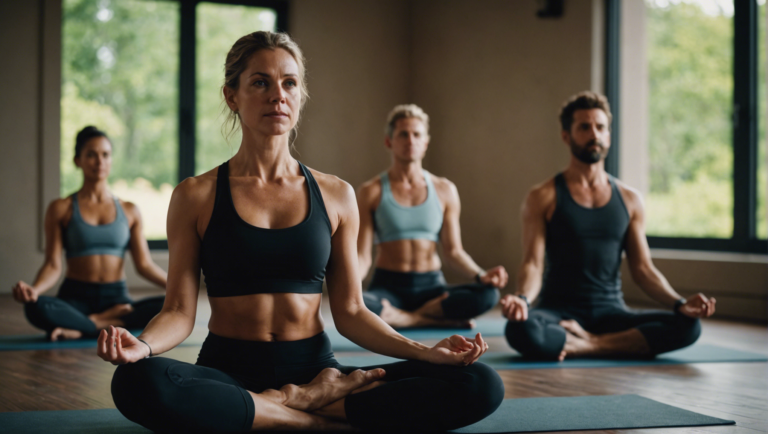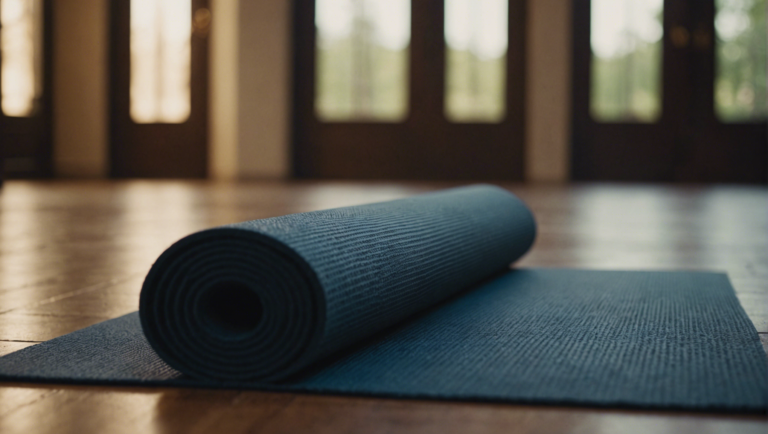Guidelines On Determining The Right Size Of Yoga Wheel You Need
Importance of Choosing the Right Size Yoga Wheel
Yoga wheels are widely used props in yoga practice to enhance flexibility, improve balance, and deepen stretches. One of the critical aspects of using a yoga wheel effectively is choosing the right size. The size of the yoga wheel you use can significantly impact your practice and overall experience. In this article, we will discuss the importance of selecting the appropriate size yoga wheel and provide guidelines to help you determine the right size for your needs.
Understanding the Role of Yoga Wheel Sizes
Yoga wheels come in various sizes, typically ranging from small to large diameters. The size of the wheel affects how it supports your body during different poses and stretches. A smaller wheel may offer more targeted support and deeper stretching potential, while a larger wheel provides stability and balance assistance for various poses. It is essential to consider your body size, flexibility level, and intended use when choosing a yoga wheel size.
Benefits of Choosing the Right Size Yoga Wheel
Selecting the right size yoga wheel can enhance your yoga practice in several ways. A properly sized wheel can help you achieve deeper backbends, improve spine flexibility, and increase core strength. By choosing a size that aligns with your body’s proportions, you can maximize the benefits of using a yoga wheel and reduce the risk of strain or injury during practice. Additionally, the right size wheel can provide better support and stability, allowing you to explore advanced poses with confidence.
Guidelines on Determining the Right Size of Yoga Wheel You Need
-
Body Proportions: Consider your height, body weight, and natural range of motion when selecting a yoga wheel size. Taller individuals may benefit from a larger wheel to accommodate their longer spine, while petite practitioners may find a smaller wheel more suitable for their body size.
-
Flexibility Level: Your current flexibility level should also influence your choice of yoga wheel size. If you are new to yoga or have limited flexibility, opting for a larger wheel can offer more support and gradual progression in your practice. Experienced yogis with advanced flexibility may prefer a smaller wheel for deeper stretches and challenges.
-
Intended Use: Determine how you plan to use the yoga wheel in your practice. If you primarily use the wheel for backbends and spinal stretches, a medium to large-sized wheel may be ideal. For more targeted muscle release and balance work, a smaller wheel might be more suitable.
-
Try Before You Buy: If possible, test out different sizes of yoga wheels before making a purchase. Many yoga studios and fitness centers offer props for trial use, allowing you to experience how each size wheel feels in various poses.
Choosing the right size yoga wheel is crucial for optimizing your practice and reaping the full benefits of this versatile prop. By considering your body proportions, flexibility level, intended use, and testing out different sizes, you can ensure that you select the perfect yoga wheel size to support your yoga journey.
Factors to Consider When Selecting a Yoga Wheel Size
When it comes to choosing the right yoga wheel size, several factors play a crucial role in ensuring a safe and effective practice. Selecting the appropriate size can enhance your yoga sessions, allowing for better support, alignment, and overall comfort. By considering these key factors, you can determine the ideal yoga wheel size that best suits your needs and preferences.
Understanding the Purpose of a Yoga Wheel
Before delving into the specifics of choosing the right size, it is essential to understand the purpose of a yoga wheel. A yoga wheel is a versatile prop that can aid in deepening stretches, improving flexibility, and enhancing balance. It can also provide support for various yoga poses, allowing for a greater range of motion and increased stability.
Body Size and Flexibility Level
One of the primary considerations when selecting a yoga wheel size is your body size and flexibility level. For individuals with a smaller frame or limited flexibility, a smaller yoga wheel may be more suitable as it can offer better support and control. On the other hand, individuals with a larger body size or advanced flexibility may benefit from using a larger yoga wheel to accommodate their range of motion.
Types of Yoga Poses
The types of yoga poses you intend to practice can also influence the size of the yoga wheel you choose. If you primarily focus on gentle stretches and restorative poses, a smaller yoga wheel may suffice. However, if you frequently engage in backbends, inversions, or advanced poses that require greater support, a larger yoga wheel can provide the stability and assistance you need.
Portability and Storage
Another factor to consider when selecting a yoga wheel size is portability and storage. If you plan to bring your yoga wheel to classes or travel with it regularly, a smaller wheel may be more convenient due to its compact size and lightweight design. Conversely, if storage space is not an issue and you prioritize stability during your practice, a larger yoga wheel may be preferable.
Personal Preference and Comfort
Ultimately, the right yoga wheel size boils down to personal preference and comfort. It is essential to choose a size that feels comfortable for you and meets your individual needs and goals. Experimenting with different sizes during your practice can help you determine which size works best for your body and practice style.
Selecting the right yoga wheel size is a personal decision that depends on various factors, including body size, flexibility level, types of yoga poses, portability, and personal comfort. By considering these factors and experimenting with different sizes, you can find the perfect yoga wheel that enhances your practice and overall yoga experience.
Common Mistakes to Avoid When Determining Your Yoga Wheel Size
Understanding the Importance of Choosing the Right Yoga Wheel Size
When it comes to yoga practice, the right tools can make a significant difference in your overall experience and progress. One such tool that has gained popularity in recent years is the yoga wheel. Yoga wheels not only help deepen stretches and improve flexibility but also add an element of fun and challenge to your routine. However, choosing the correct size of a yoga wheel is crucial to fully reap its benefits. Here are some common mistakes to avoid when determining the right size of a yoga wheel.
Mistake 1: Ignoring Your Height and Body Size
One of the most common mistakes when selecting a yoga wheel is overlooking your height and body size. It’s essential to consider these factors as they play a significant role in how comfortably you can use the wheel during your practice. Taller individuals may require a larger wheel to accommodate their frame, while smaller individuals may find a smaller wheel more suitable for their needs.
Mistake 2: Neglecting Your Skill Level
Another mistake to avoid is neglecting your skill level when choosing a yoga wheel size. Beginners may find a larger wheel more challenging to use, as it requires a higher level of balance and flexibility. In contrast, more advanced practitioners may benefit from a larger wheel to deepen their practice and enhance their flexibility. Be honest about your skill level and choose a wheel size that aligns with your current abilities.
Mistake 3: Not Considering the Wheel’s Intended Use
Yoga wheels come in various sizes, each designed for specific purposes. Some wheels are better suited for deepening backbends, while others are ideal for improving balance and core strength. Before selecting a size, think about how you plan to use the wheel in your practice. If you primarily want to use it for backbends, a larger wheel may be more suitable. For balance and core exercises, a smaller wheel could be a better option.
Mistake 4: Focusing Solely on Price or Aesthetics
While cost and aesthetics are essential factors to consider when buying a yoga wheel, they should not be the sole determinants of the size you choose. Opting for a cheaper or more visually appealing wheel that is the wrong size for your body can hinder your progress and lead to discomfort during practice. Instead, prioritize function and practicality when selecting a yoga wheel size.
Choosing the right size of a yoga wheel is integral to maximizing its benefits and enhancing your yoga practice. By avoiding these common mistakes and taking into account your height, body size, skill level, intended use, and functionality, you can select a wheel that aligns with your needs and goals. Remember that the perfect yoga wheel size is one that supports your practice and helps you achieve your desired outcomes.
Tips for Properly Measuring for the Ideal Yoga Wheel Size
Understanding the Importance of Size When Choosing a Yoga Wheel
When it comes to yoga practice, incorporating props like a yoga wheel can enhance your practice by providing support and helping you deepen stretches. However, choosing the right size of a yoga wheel is crucial to ensure maximum benefits and comfort during your practice.
Factors to Consider When Determining the Right Size of a Yoga Wheel
Body Size and Structure
One of the key factors to consider when determining the right size of a yoga wheel is your body size and structure. The yoga wheel should comfortably support your body weight and provide stability during poses. If you have a smaller frame, opting for a smaller-sized yoga wheel would be more suitable, whereas individuals with a larger build may benefit from a larger-sized wheel for better support.
Level of Experience
Your level of experience in yoga practice also plays a role in choosing the right size of a yoga wheel. Beginners may find it easier to work with a larger wheel as it offers more surface area for stability and support during poses. On the other hand, seasoned yogis who are looking to deepen their practice may prefer a smaller wheel for more targeted stretches and challenging poses.
Guidelines for Measuring for the Ideal Yoga Wheel Size
Step 1: Measure Your Height
Start by measuring your height to determine the correct diameter of the yoga wheel. For individuals below 5 feet 4 inches tall, a wheel with a diameter of 12 inches is recommended. Those between 5 feet 4 inches and 5 feet 10 inches tall may opt for a 10-12 inch wheel, while individuals taller than 5 feet 10 inches may prefer a 12-15 inch wheel.
Step 2: Consider Your Yoga Goals
Consider the specific yoga poses you intend to practice with the yoga wheel. If you are focusing on backbends and heart-opening poses, a larger wheel may be more suitable. For targeting specific muscle groups or balance poses, a smaller wheel could be beneficial.
Step 3: Test Different Sizes
If possible, try out different sizes of yoga wheels at a local yoga studio or store to see which size feels most comfortable and supportive for your practice. Testing out various sizes will give you a better idea of what works best for your body and yoga goals.
Final Thoughts
Choosing the right size of a yoga wheel is essential for optimizing your yoga practice and ensuring comfort and support during poses. By considering factors such as body size, experience level, height, and specific yoga goals, you can determine the ideal size of a yoga wheel that aligns with your needs. Remember to prioritize comfort and stability when selecting a yoga wheel to enhance your practice and overall yoga experience.


